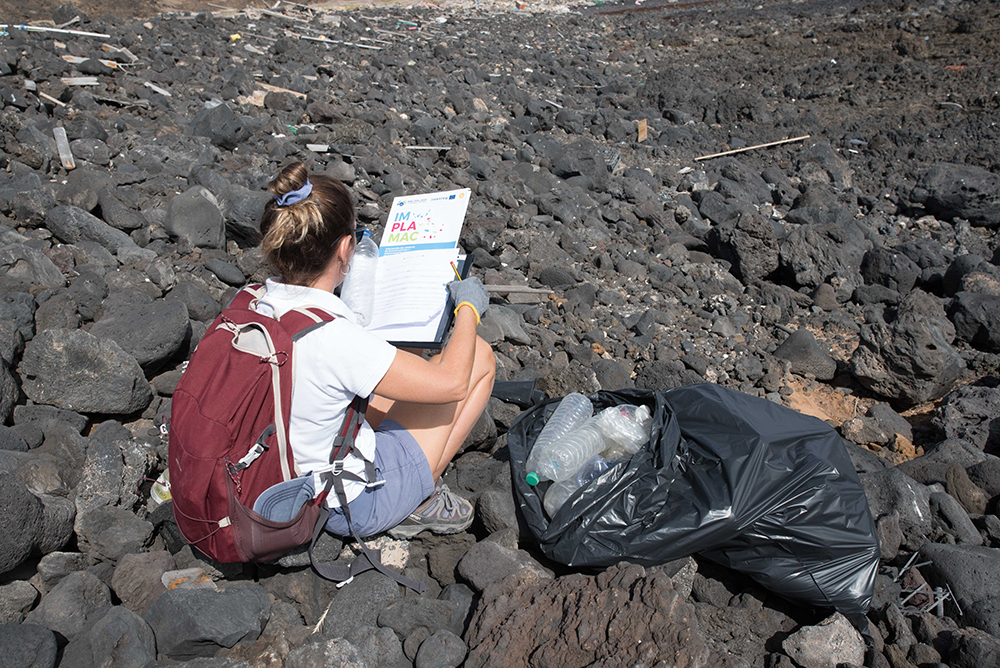This action has the collaboration of WWF, the Cabildo of Lanzarote and the Ayuntamiento de Teguise, and is part of the IMPLAMAC project, which aims to create an observatory of the amount of microplastics present on beaches and in the sea of the Macaronesian archipelagos and the chemical pollutants associated with them.
During the expedition, open days will be held on each island to raise awareness and provide environmental education.
The Ecophysiology of Marine Organisms (EOMAR) research group of the ECOAQUA University Institute of the University of Las Palmas de Gran Canaria (ULPGC), together with guest researchers from the Technical University of Denmark (DTU), embarked this Monday on a two-week research campaign that will follow an itinerary that will take them from Alegranza to the island of La Palma. The expedition will take place aboard the Windfall, a two-masted sailing ship that was built in 1975 for Doctor Fructus, who was the scientific director of COMEX and a friend and companion of Commander Jacques Cousteau.
This expedition is part of the IMPLAMAC project (Impact assessment of microplastics and emerging pollutants on the coasts of Macaronesia), which belongs to MAC2/1.1a/265, INTERREG MAC 2014-2020 Cooperation Programme, involving the University of La Laguna (ULL) and the University of Las Palmas de Gran Canaria (ULPGC) in the Canary Islands, as well as partners from the Azores, Madeira and Cape Verde. The aim is to create an observatory of the amount of microplastics present on beaches and in the sea of the four archipelagos, and the chemical pollutants associated with them.
The activities proposed during the IMPLAMAC expedition include the cleaning and classification of marine litter on the island of Alegranza, together with WWF and thanks to the collaboration of the Cabildo de Lanzarote and Ayuntamiento de Teguise.
In addition, scientific activities planned during the expedition include the collection of microplastic and zooplankton samples in areas of maximum accumulation and areas less affected by pollution. The aim is to determine, on the one hand, the amount of floating microplastics, and on the other hand, the relationship between microplastics and zooplankton, which is at the base of the marine food chain. On the other hand, to analyse the chemical pollutants that accumulate in plastics and the possible effects on the health of marine organisms.
To study the effect on the higher levels of the marine food chain, it is planned to analyse cetacean faeces, in this case that of the short finned pilot whale (Globicephala macrorhynchus), research that the EOMAR group is carrying out together with the Tonina Association in Tenerife, a benchmark in the conservation of this species on the islands.
Different types of nets will be used to carry out these surveys, such as a manta net that collects plastics and plankton at the surface, a WP2 net that collects plastics and plankton in the water column, and a UFO pump, which can analyse the water at different depths.
Analysis of the effects of volcanic activity on La Palma
The expedition will end on the island of La Palma, where plankton samples will be taken to study the effect of volcanic activity on the structure of the community, its metabolic activity and its state of health, using biomarkers. The performance of this sampling will depend in any case on the evolution of volcanic activity and the authorisation of the competent authorities, always following the safety measures established at all times.
Another important objective of the project is to contribute to public awareness of the problem of plastic pollution by carrying out various awareness-raising and environmental education activities. During the campaign, open days will be held for the public, where participants will be able to come on board to observe the work being carried out by the scientists, see the samples and data that have been obtained and learn about the danger that microplastic pollution poses to marine organisms.


